Search
All results
(88)
MediaInfos
(47)
BasicInfos
(2)
Press kits
(4)
Images
(4)
Videos
(3)
Publications
(11)
 2023: Combined Annual and Sustainability Report
2023: Combined Annual and Sustainability Report
One will be designed for efficiency and range, while the other will mark the entry into the Q6 e-tron product line. Performance and efficiency in perfect combination However, the Audi Q6 e-tron has more to offer than just sporty performance – it also has the longest elec‑ tric range in the current Audi portfolio. The range of up to 625 kilometers (according to WLTP) of the Audi Q6 e-tron quattro¹ is primarily thanks to the high‑ performance, compact and highly efficient electric motors as well as a newly developed lithium‑ion battery consisting of 12 modules and 180 prismatic cells with a total gross capacity of 100 kWh (94.9 kWh net). Thanks to the sophisticated thermal man‑ agement, the 800‑volt technology and a maximum DC charging power of 270 kW³ as standard, short charging stops are possible with the Audi Q6 e-tron family. For instance, sufficient additional charging for up to 255 kilometers more range can be achieved in a mere 10 minutes at a suitable charging terminal (High Power Charging – HPC). The state of charge (SOC) increases from 10 to 80 percent in around 21 minutes. Advanced recuperation is an important factor in increasing efficiency and therefore range. Around 95 percent of all everyday braking processes can be carried out using this. The Audi Q6 e-tron¹ recuperates at a rate of up to 220 kW in the process. ¹ Audi Q6 e-tron quattro: electric power consumption in kWh/100 km (combined): 19.6–17.0; CO₂ emissions in g/km (combined): 0; CO₂ class: A. ² Audi SQ6 e-tron: electric power consumption in kWh/100 km (com‑ bined): 18.4–17.5 (WLTP); CO₂ emissions in g/km (combined): 0; CO₂ class: A. ³ Battery charging time and power can vary depending on various factors such as ambient and battery temperature, use of other country-specific plugs, use of the preconditioning function (e.g., remote‑controlled air conditioning of the vehicle), power availability at the charging terminal, charge status and age of the battery.
 Audi Report 2022
Audi Report 2022
In the course of our assurance engagement we have, among other things, performed the following assurance procedures and other activities: • Gain an understanding of the structure of the sustainability organization and sustainability management, • Inquiries of the executive directors and relevant employees involved in the preparation of the report about the preparation process and about disclosures in the report, • Inquiries of employees of the Company’s headquarters as well as the employees responsible for the data capture and consolidation as well as the preparation of the report in order to assess the To AUDI AG, Ingolstadt We have performed a limited assurance engagement on selected sustainability key figures for the year 2022 in the overview “Audi Sustainability Key Figures” as well as selected disclosures in the “Audi Report | Combined annual and sustainability report” of the AUDI AG, Ingolstadt, (hereinafter the “Company”), which have been marked with the symbol “ ” in the report for the period from 1 January to 31 December 2022 (hereafter the “report”). Our engagement exclusively refers to the disclosures marked with the “ ” symbol in the German PDF-version of the report. Not subject to our assurance engagement are other references to disclosures made outside the report as well as prior-year disclosures. Responsibilities of the executive directors The executive directors of the Company are responsible for the preparation of the report in accordance with the Sustainability Reporting Standards of the Global Reporting Initiative (hereafter “GRI criteria”) as well as the selection of the criteria to be assessed. These responsibilities of the Company’s executive directors include the selection and application of appropriate non-financial reporting methods and making assumptions and estimates about individual non-financial disclosures that are reasonable in the circumstances.
 Anniversary Dates 2023
Anniversary Dates 2023
The slightly unusual addition of 3=6 to the name was intended to demonstrate that a three-cylinder two-stroke engine delivers the same performance as a six-cylinder four-stroke engine because it boasts twice the number of power strokes. 70 years Audi Tradition 28 Anniversary Dates 2023 At the 2nd International Bicycle and Motorcycle Show in October 1953, NSU unveiled the successor to the successful NSU Quick. The 50 cc NSU Quickly, which did not require a licence to ride, produced 1.4 hp, which was good for a top speed of 40 km/h. The light two-speed moped, which was prescribed to have tread pedals, weighed just 33 kilograms and fully satisfied the regulations that had been passed in January 1953 for this new type of vehicle. The motor-assisted bicycle was legally defined as a vehicle with a cubic capacity of 50 cc with a maximum mass of 30 kg (+ 10% tolerance); the pedal crank dimensions and minimum wheel diameter were stipulated. The catchy NSU advertising with slogans such as “Stop walking, buy Quickly” enticed even the most committed pedestrian to try this motorised bicycle. The NSU Quickly-N, the basic model without any rear wheel suspension, on its own attracted 540,000 buyers over nine years of production. NSU Quickly 70 years Audi Tradition 29 Anniversary Dates 2023 On 29 June 1932, Auto Union AG based in Chemnitz was founded as an amalgamation of Zschopauer Motorenwerke J.S. Rasmussen AG (DKW), Audiwerke AG (Zwickau), Horchwerke AG (Zwickau) and the Automotive Division of Wanderer-Werke AG (Chemnitz- Schönau/Siegmar). The absorbing company was Zschopauer Motorenwerke AG. Shortly before the end of the war and the Russian occupation of the industrial area of Saxony, the previous Board of Auto Union AG (Richard Bruhn, William Werner, Carl Hahn) in Chemnitz departed on 7 May 1945.
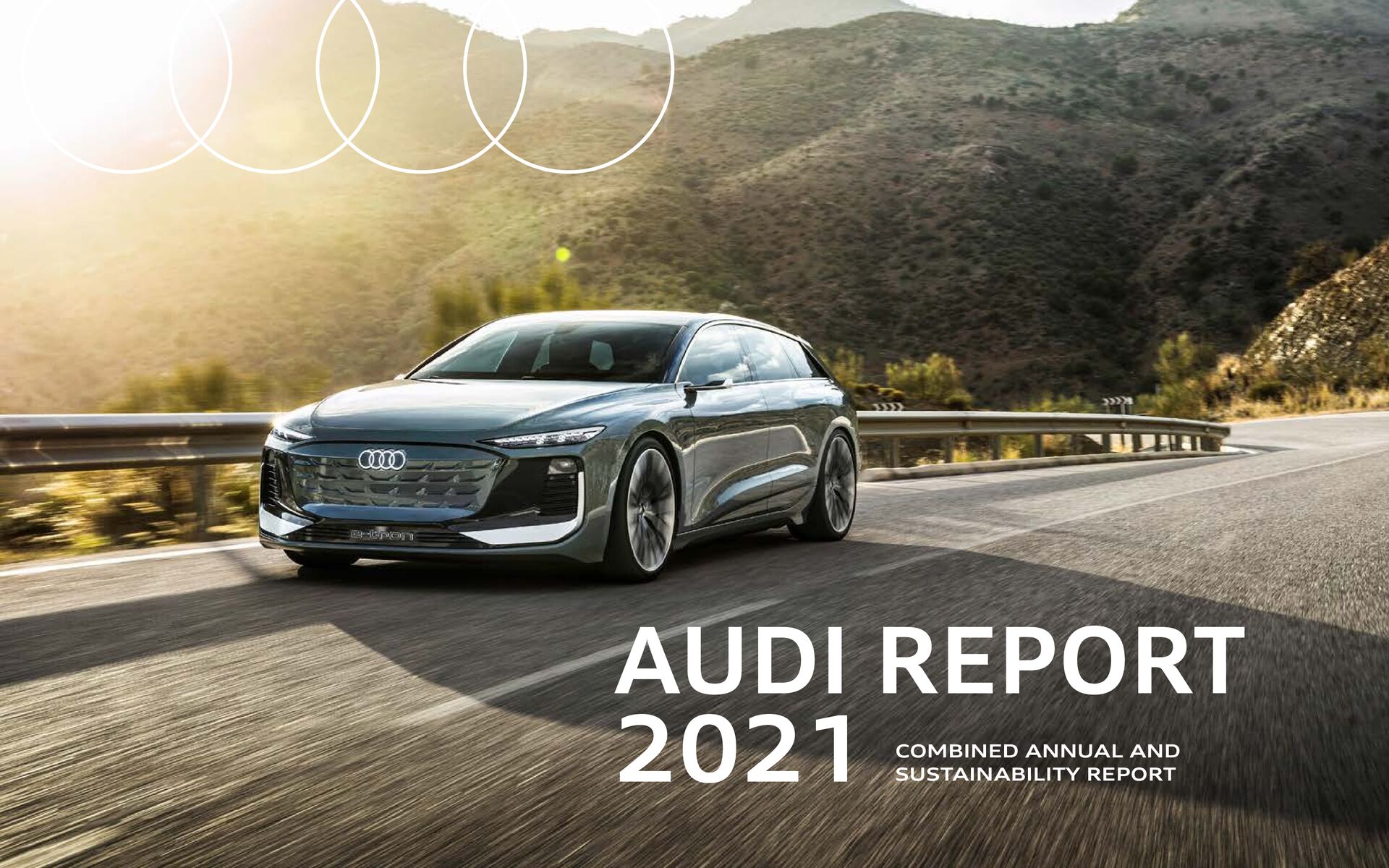 Audi Report 2021
Audi Report 2021
Further information on official fuel consumption figures and the official specific CO₂ emissions of new passenger cars can be found in the “Guide on the fuel economy, CO 2 emissions and power consumption of all new passenger car models,” which is avail- able free of charge at all sales dealerships and from DAT Deutsche Automobil Treuhand GmbH, Hellmuth-Hirth-Str. 1, 73760 Ostfildern-Scharnhausen, Germany, or under → www.dat.de. http://www.dat.de Audi Report 2021 125 S trateg y P ro d u cts & S ervices O p eratio n s & In teg rity V alu e C reatio n & P ro d u ctio n E m p lo yees & S o ciety A p p en d ix In tro d u ctio n To Audi AG, Ingolstadt We have performed a limited assurance engagement on selected sustainability key figures for the year 2021 in the overview “Audi Sustainability Key Figures” as well as selected disclosures in the “Audi REPORT | combined annual and sustainability report” of the Audi AG, Ingolstadt, (hereinafter the “Company”), which have been marked with the symbol “ ” in the report for the period from 1 January to 31 December 2021 (hereafter the “report”). Our engagement exclusively refers to the disclosures marked with the “ ” symbol in the German PDF-version of the report. References to information outside the report as well as prior-year disclosures were not subject to our assurance engagement. Responsibilities of the executive directors The executive directors of the Company are responsible for the preparation of the report in accordance with the Sustainability Reporting Standards of the Global Reporting Initiative (hereafter “GRI criteria”) as well as the selection of the criteria to be assessed. These responsibilities of the Company’s executive directors include the selection and application of appropriate sustainability reporting methods and making assumptions and estimates about individual disclosures that are reasonable in the circumstances.
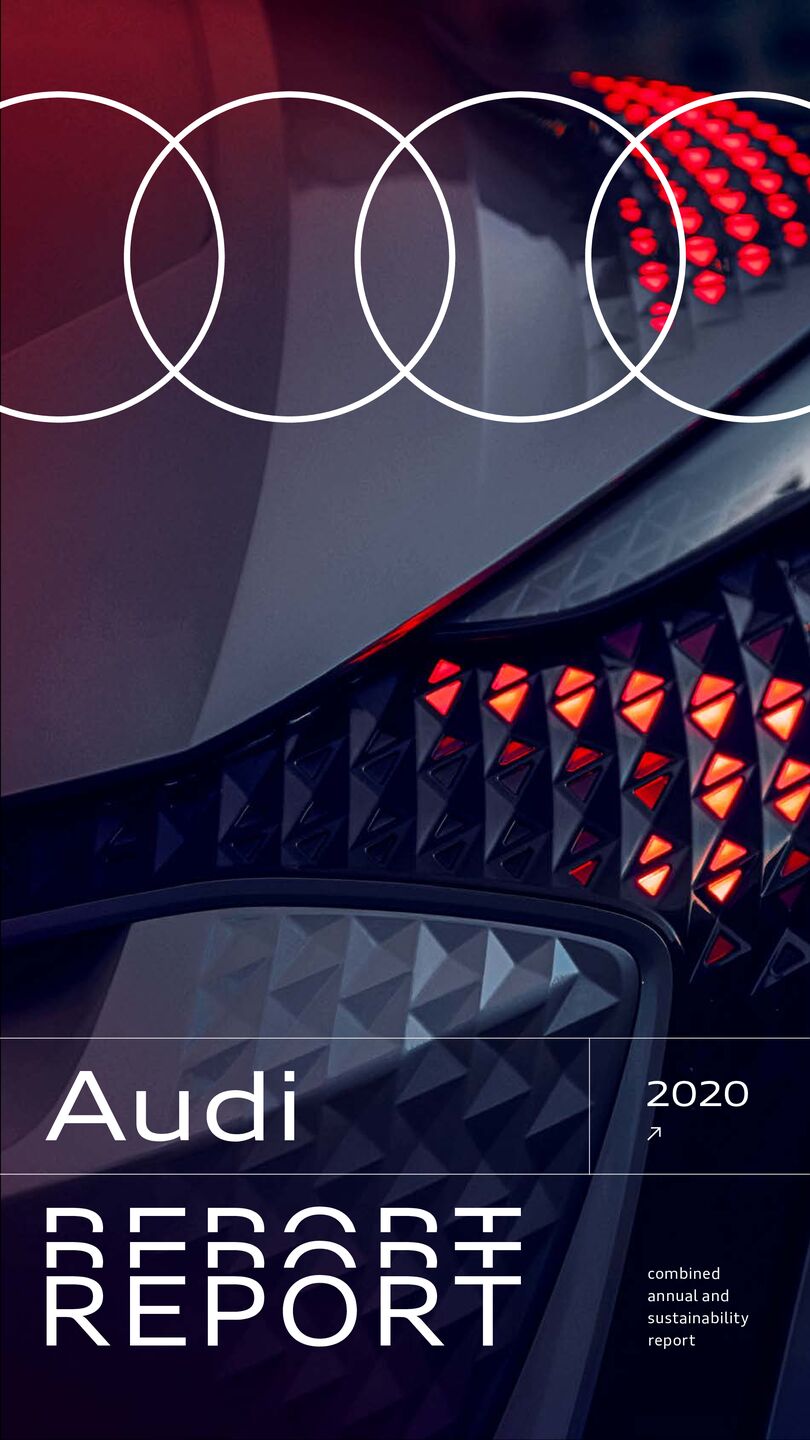 Audi Report 2020
Audi Report 2020
Employees & Society AUDI GROUP STRATEGY Audi Report 2020 Querverweis 6-1_ContentWheel_Ende 322 Appendix Independent Auditor’s Limited Assurance Report To AUDI Aktiengesellschaft, Ingolstadt We have performed a limited assurance engagement on selected sustainability key figures in the overview “Audi Sustainability Key Figures” for the year 2020 in the “Audi REPORT | combined annual and sustainability report” of AUDI AG, Ingolstadt, for the reporting period from 1 January 2020 to 31 December 2020 (hereafter the report). Our engagement exclusively relates to the selected key figures in the overview “Audi Sustainability Key Figures” in the annex of the “Audi REPORT | combined annual and sustainability report” of AUDI AG and to the German PDF-version of the report. The assured selected key figures are marked with the symbol “ ” (hereafter selected key figures). The report is published as PDF-version under www.audi.com/de/company/sustainability.html. The assurance engagement performed by Ernst & Young (EY) relates exclusively to the German PDF-version of the “Audi REPORT | combined annual and sustainability report” of AUDI AG. The following text is a translation of the original German Independent Assurance Report. Audi Report 2020 Querverweis 6-1_Vermerk 323 http://www.audi.com/de/company/sustainability.html Appendix Management’s responsibility The legal representatives of AUDI AG (hereafter: “the Company”) are responsible for the preparation of the report in accordance with the Sustainability Reporting Standards of the Global Reporting Initiative (hereafter “GRI criteria”) as well as the selection of the criteria to be assessed. This responsibility includes the selection and application of appropriate methods to prepare the report as well as making assumptions and estimates related to individual sustainability disclosures which are reasonable in the circumstances.
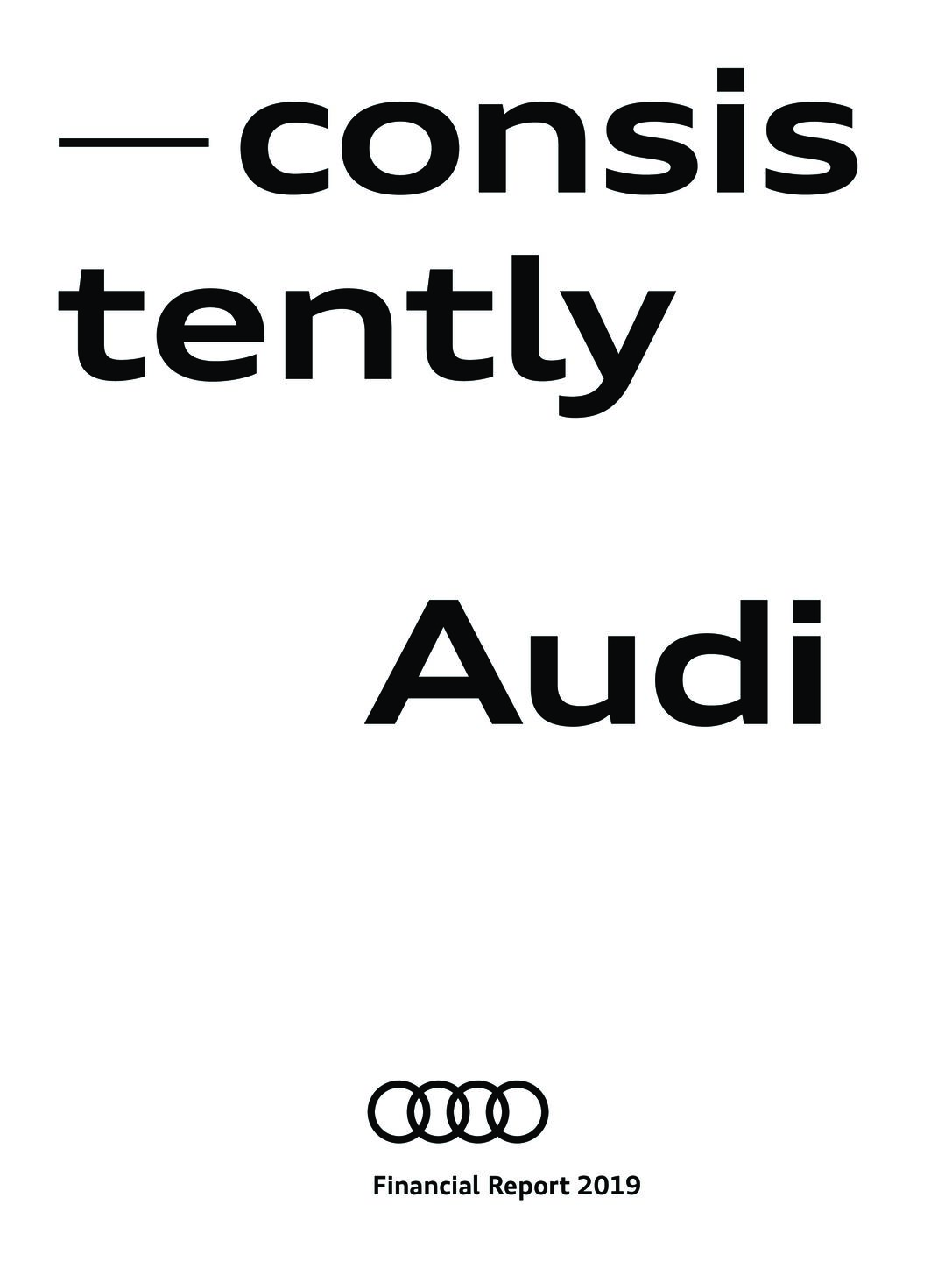 Financial Report 2019
Financial Report 2019
The hedging transactions are performed centrally for the Audi Group by Volkswagen AG on the basis of an agency agreement. The Audi Group additionally concludes hedging transactions of its own to a limited extent, where this helps to simplify current operations. The hedging transactions are effected by means of marketable derivative financial instruments (forward exchange contracts and forward exchange options). Contracts are concluded exclusively with first-rate national and international banks whose creditworthiness is regularly examined by leading rating agencies and by Central Risk Management at Volkswagen AG. For the purpose of managing currency risks, exchange rate hedging in the 2019 fiscal year primarily focused on the U.S. dollar, the British pound, and the Chinese renminbi. Currency risks pursuant to IFRS 7 arise as a result of financial instruments that are of a monetary nature and that are denominated in a currency other than the functional currency. Exchange rate differences from the translation of financial statements into the Group currency (translation risk) are disregarded. Within the Audi Group, the principal non-derivative financial instruments (cash, receivables, securities held and debt instruments held, interest-bearing liabilities, interest-free liabilities) are either denominated directly in the functional currency or substantially transferred to the functional currency through the use of derivatives. Above all, the generally short maturity of the instruments also means that potential exchange rate movements have only a very minor impact on profit or equity. Currency risks are measured using sensitivity analyses, during which the impact on profit after tax and equity of hypothetical changes to relevant risk variables is assessed. All non-functional currencies in which the Audi Group employs financial instruments are fundamentally treated as relevant risk variables.
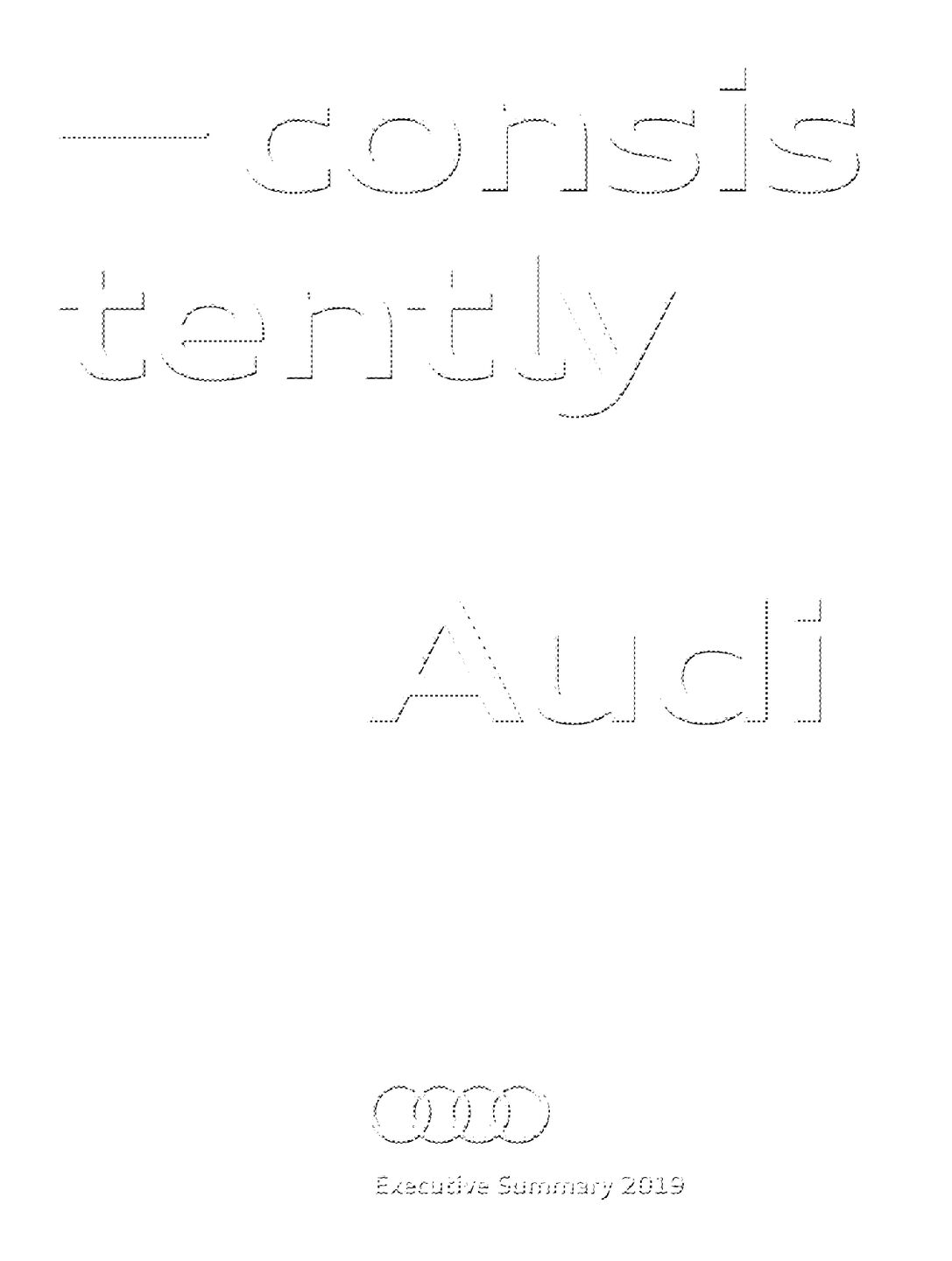 Executive-Summary
Executive-Summary
Audi Group Key figures 2019 2018 Change Deliveries to customers Cars, Audi brand 1) 1,845,573 1,812,485 +1.8% Cars, Lamborghini brand 8,205 5,750 +42.7% Motorcycles, Ducati brand 53,183 53,004 +0.3% Revenue EUR million 55,680 53,6172) +3.8% Operating profit EUR million 4,509 3,5293) +27.8% Operating return on sales Percent 8.1 6.6 2), 3) +1.5 ppt. Return on investment (ROI) Percent 12.7 10.4 2), 3) +2.3 ppt. Ratio of capex 4) Percent 4.9 6.5 2) –1.6 ppt. Research and development ratio Percent 7.9 7.8 2) +0.1 ppt. Net cash flow EUR million 3,160 2,080 2), 3) +51.9% Workforce Average for the year 90,783 91,477 –0.8% Fleet CO₂ emissions 5) g/km 1316) 129 +1.6% 1) This includes 630,800 (600,700) delivered Audi models built locally by the associated company FAW-Volkswagen Automotive Company, Ltd., Changchun (China). 2) 2018 figures excluding multi-brand sales companies. Read more about the deconsolidation of the multi-brand sales companies in the Audi Financial Report. 3) Key figure for 2018 fiscal year reduced by special items in connection with the diesel issue 4) Investments in property, plant and equipment, investment property and other intangible assets according to the cash flow statement in relation to revenue 5) Average fleet emissions of new vehicles of the Audi brand for EU 28 including Norway and Iceland 6) Provisional internal calculations for 2019 subject to confirmation by the EU Definitions of these key figures and further information can be found in the Audi 2019 Financial Report at www.audi.com/annual-report. https://www.audi.com/content/dam/gbp2/en/company/investor-relations/reports-and-key-figures/annual-reports/EN_Audi_Financial_Report_2019.pdf https://www.audi.com/content/dam/gbp2/en/company/investor-relations/reports-and-key-figures/annual-reports/EN_Audi_Financial_Report_2019.pdf new strategy, new electric models, new digital offers. For Audi, the 2019 fiscal year was a year of transformation. The company is transitioning from a car manufacturer in
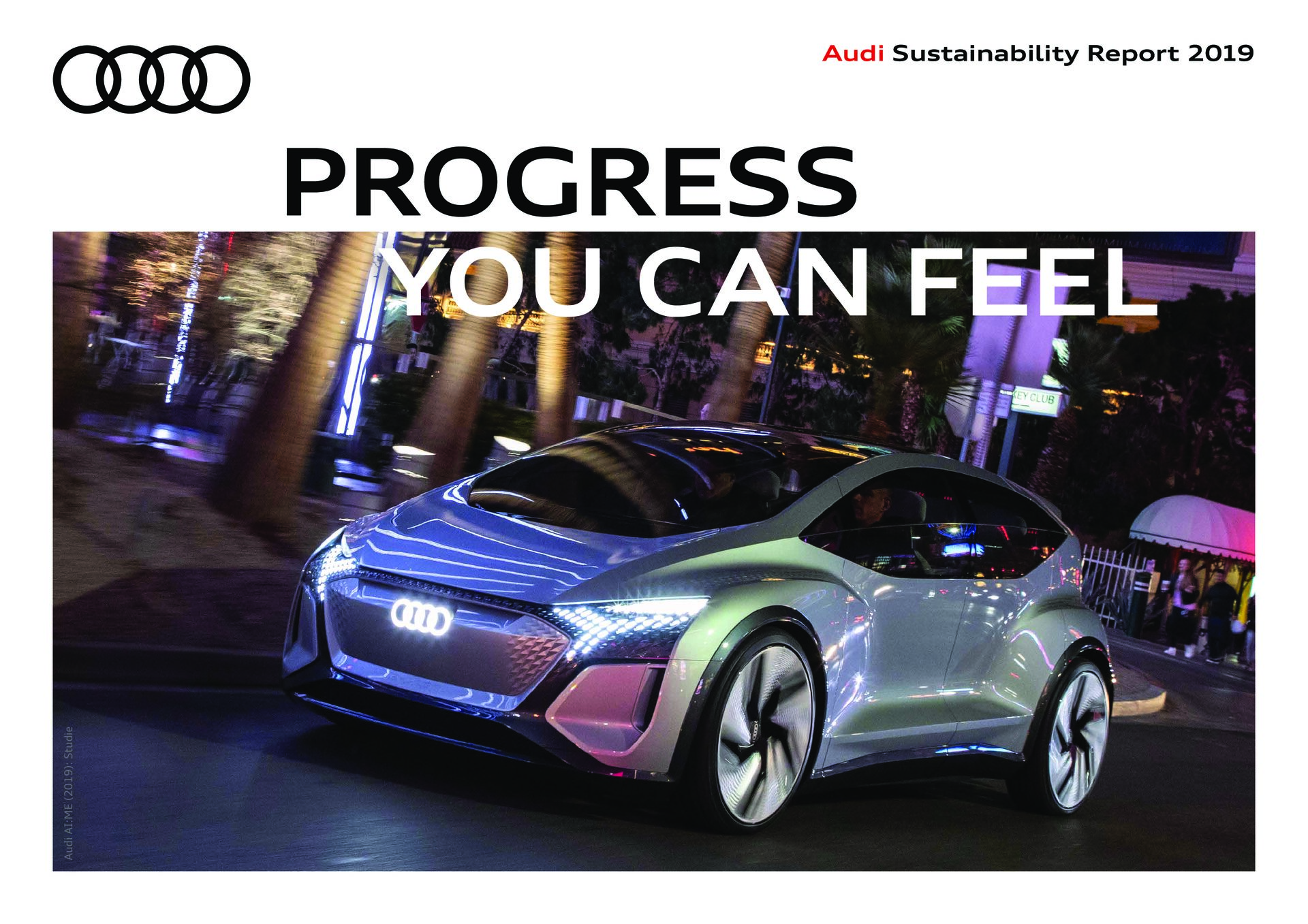 Audi Sustainability Report 2019
Audi Sustainability Report 2019
According to Porter, the value chain represents a collection of activities that are performed to design, produce, market, deliver and support a product. Moreover, it reveals the path a product or a service will follow throughout the transformation process. In the process, various tasks for rendering service are described, from development, procurement and production to sales and after-sales services. In practice, the value chain serves as a means of analyzing corporate activities and represents a complex methodological instrument. The scientific history of the value chain The value chain depicts production levels as an organized sequence of activities, which in turn create value, use resources and are linked to each other through processes. The concept was first introduced by the American STRATEGY 14 EMPLOYEES & SOCIETYFOREWORD APPENDIXBRIEF PORTRAIT OPERATIONS & INTEGRITY PRODUCTS & SERVICES VALUE CREATION & PRODUCTION Audi Sustainability Report 2019 Progress you can feel Core areas The outline of the Audi Sustainability Program combines strategic goals with concrete measures in an understandable manner. ESG criteria Chapter reference for the capital-market-relevant criteria of Environment, Social and Governance (ESG) Materiality analysis What concerns stakeholders, what do they expect from Audi? A selection of the most important results from the materiality analysis.SDG Sustainable Development Goals (SDGs): Allocation of the 17 global goals for sustainable development Sustainability Roadmap Comparison with the goals of the sustainability program Topics Story that highlights Audi’s commitment – GRI Comparison with the GRI Standards of the Global Reporting Initiative (GRI) Consistently sustainable Important pillars of the corporate strategy “consistently Audi” (see also page 15) STRATEGY In the spotlight The “consistently Audi” strategy, which was presented in May 2019, is changing many things.